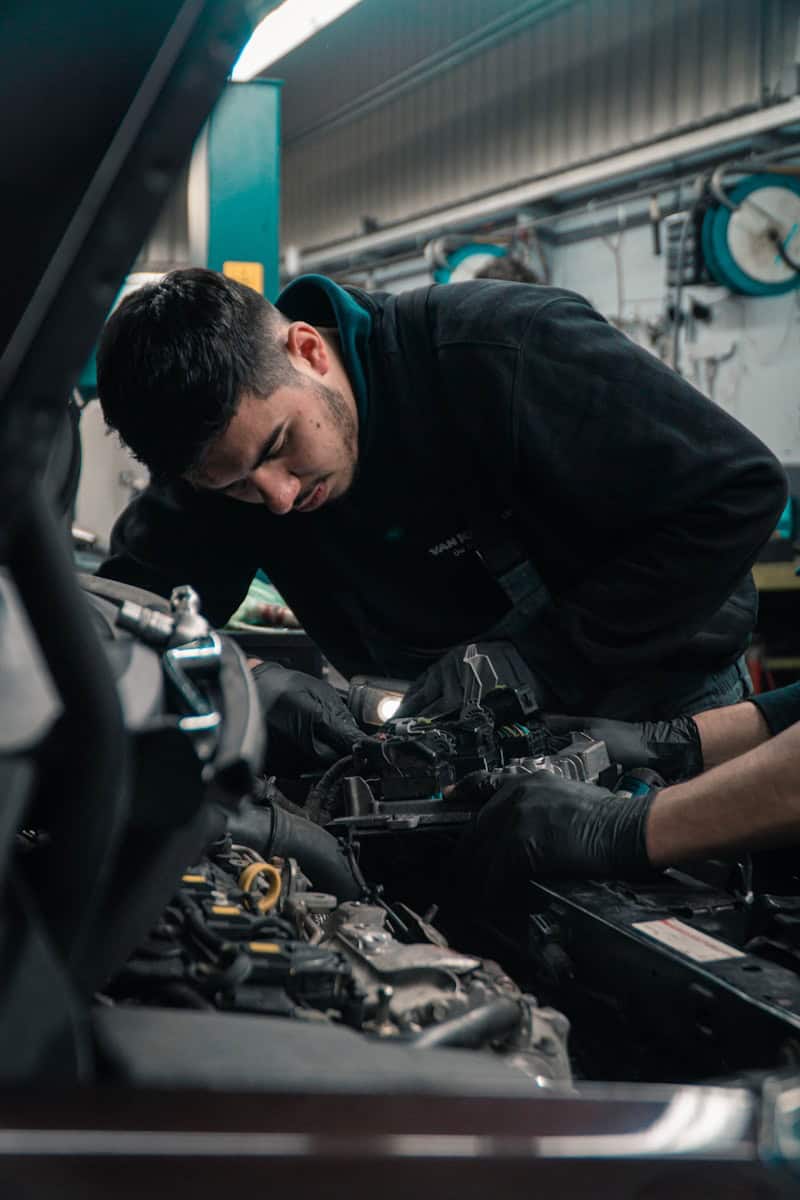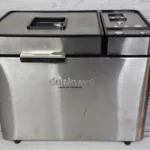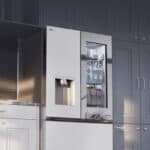When the engine light of a car illuminates, a code with the number P0171 may appear. This code indicates that the air and gasoline mixture in the engine is not balanced, meaning it has either too much air or not enough gasoline. This can negatively affect the car’s performance. Mechanics use this code to diagnose the underlying problem. There are several reasons why this issue may arise, such as a small air leak or a dirty or damaged sensor responsible for measuring air. These problems can cause the engine to not function properly, resulting in the car running roughly or experiencing difficulty when working hard.
Understanding and Addressing Engine Code P0171
If your vehicle’s check engine light is on and a scan reveals a P0171 code, it means your car’s engine is running lean. This indicates that there’s too much air and not enough fuel in the air-fuel mixture within your engine’s combustion chamber. A lean condition can cause various problems, so it’s important to diagnose and fix the issue.
What Causes Engine Code P0171?
Here are some of the most common causes of a P0171 engine code:
- Vacuum Leaks: A vacuum leak allows unmetered air to enter the engine, disrupting the air-fuel ratio. Check for cracked or loose hoses, especially around the intake manifold area.
- Faulty Mass Airflow (MAF) Sensor: This sensor measures the amount of air entering the engine. A malfunctioning MAF sensor can send incorrect readings to the Engine Control Module (ECM).
- Faulty Oxygen Sensor: The oxygen sensor helps the ECM regulate the air-fuel mixture. A failing oxygen sensor can lead to incorrect adjustments.
- Clogged Fuel Injectors: If your fuel injectors aren’t delivering enough fuel, it can cause a lean mixture.
- Fuel Pump Issues: A weak fuel pump may not be able to supply enough fuel pressure, leading to a lean condition.
Symptoms of Engine Code P0171
Besides the check engine light, you might notice other symptoms, including:
- Rough idling
- Difficulty starting the engine
- Hesitation or stumbling under acceleration
- Decreased fuel efficiency
How to Diagnose and Fix Engine Code P0171
Here’s a general troubleshooting guide:
- Visual Inspection: Visually check for vacuum leaks, loose or damaged hoses, and disconnected electrical connectors.
- Clean the MAF Sensor: Use a MAF sensor cleaner to clean the sensor carefully.
- Inspect Oxygen Sensor(s): Check for damaged wiring or faulty sensors. You may need a professional mechanic to test the oxygen sensors.
- Fuel Pressure Test: Test the fuel pressure to ensure the fuel pump is working correctly.
- Professional Mechanic: If the issue persists, seek help from a mechanic for advanced diagnostics.
Potential Risks of Ignoring Engine Code P0171
Running your engine with a lean condition for an extended period can have adverse effects:
| Potential Issue | Explanation |
|---|---|
| Engine Damage | A lean mixture can cause excessive heat, potentially leading to damaged pistons, valves, or catalytic converter. |
| Decreased Performance | Your engine might not run smoothly, leading to poor acceleration and responsiveness. |
| Increased Emissions | A lean condition can make your vehicle fail emissions tests. |
Important Note: Always address a P0171 engine code promptly to protect your engine and ensure your vehicle runs smoothly.
Understanding the Basics of Engine Code P0171
Engine code P0171 pops up when there’s a lean mix of air and fuel in a car’s engine. This section looks at what P0171 means, why it happens, and which car parts are involved.
Defining P0171: System Too Lean
P0171 is an engine code that tells you your car’s air to fuel ratio is off. Specifically, it means bank 1 has too much air or not enough fuel. Bank 1 is the side of your engine with the first cylinder.
Common Causes for P0171
A few things can make P0171 show up, like:
- Vacuum leaks: They let extra air slip into the engine.
- Fuel system issues: These could be a weak fuel pump, dirty fuel injectors, or low fuel pressure.
- Air metering gadgets: If your mass airflow (MAF) sensor is dirty or not working right, it can mess up the air-fuel mix.
Components Involved in Air-Fuel Regulation
Several parts help keep the air and fuel balanced:
- Oxygen sensors: They check the air and fuel and tell the engine control module (ECM) or powertrain control module (PCM) if changes are needed.
- Fuel pump: It pushes fuel to the engine. If it’s weak, not enough fuel gets there.
- MAF sensor: This measures how much air comes in so the fuel amount can match up. If it’s wrong, the mix is off.
- ECM/PCM: These are the car’s brains. They take messages from sensors and decide what to do to keep the air and fuel right.
Diagnostic and Repair Strategies for P0171
Engine code P0171 means the air-to-fuel ratio in the engine is off. There’s too much air or not enough fuel. This section will discuss ways to figure out why this is happening and how to fix it.
Methods for Diagnosing P0171
The first step to diagnosing a P0171 code is to use a scan tool. This tool reads codes from the car’s computer. It can help you see if there are issues with:
- O2 sensors: Sensors that check oxygen levels in the exhaust
- Mass airflow sensor: Measures the air coming into the engine
- Fuel pressure: Tells if the fuel has the right pressure
A mechanic will check for:
- Vacuum leaks in hoses and lines
- Exhaust leaks
- A clogged fuel filter or faulty fuel pressure regulator
- Problems with the PCV valve or intake manifold gaskets
They can use a fuel pressure gauge to test fuel pressure. If the pressure is low, it might mean there is a clogged filter or a bad regulator.
Step-by-Step Repair Guide
Once the problem is found, repairs can begin. Here’s a guide to fixing P0171:
Check vacuum hoses and lines
- Look for cracks or loose connections.
- Replace damaged hoses.
Inspect the intake hose
- Ensure it’s secure and not cracked.
Replace faulty sensors
- This includes the O2 sensor and mass airflow sensor if they’re bad.
Check and replace spark plugs
- Worn spark plugs might cause issues.
Change the fuel filter
- If it’s clogged, it needs a new one.
Fix fuel pressure regulator
- If it’s faulty, replace it.
Repair or replace fuel injectors
- If they’re clogged or broken, they won’t work right.
Seal intake manifold gaskets
- If they leak, they need new seals.
By following these repair steps, a car with P0171 can be fixed. It’s important to sort out the root cause to stop the problem from coming back.
Frequently Asked Questions
This section answers common questions about the engine code P0171.
What are the steps involved in resolving an engine code P0171?
First, scan the vehicle’s computer. Then check for leaks in the vacuum line. After that, look at the fuel system. Make sure the fuel filter is not clogged. The next step is to examine the oxygen sensor. In the end, clear the code and test drive the car.
What could be potential reasons for a vehicle to display a code P0171?
The car might show a P0171 code because the air-fuel mix is not right. There could be a leak in the air system. The fuel pump might be weak. The oxygen sensor could be bad.
Is it safe to operate a vehicle when a P0171 code is present?
It can be unsafe to drive with a P0171 code. It can hurt the engine. It is best to fix it early.
Are there common symptoms associated with an engine code P0171?
Yes, some symptoms are a rough idle, poor power, and a fuel smell. You might see the check engine light. The car may use more gas than usual.
How can routine maintenance prevent a P0171 code?
Regular checks can spot leaks and sensor issues. Change filters and check the fuel system often. These steps can keep P0171 from coming up.
What is the estimated repair cost for addressing a P0171 code?
Costs can be from $100 to $1200. New parts like sensors or a fuel pump will cost more. It depends on what needs fixing.







